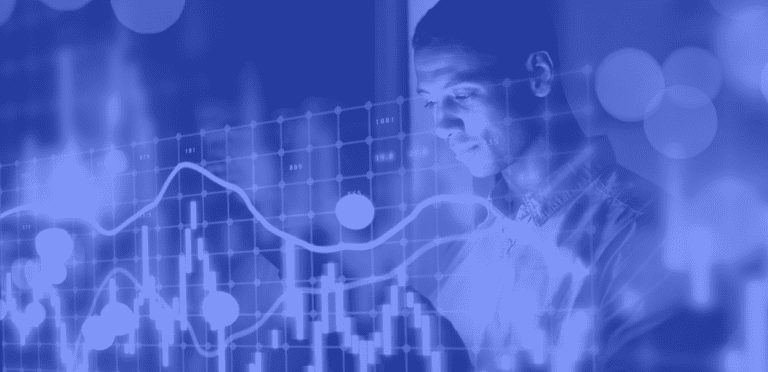Data Monetization Trends and Insights for the Next 20 Years

For many organizations in the post-pandemic era, data monetization has been a way to strategically harness the data housed in their systems to drive innovation and thicken revenue streams. Data monetization is the practice of using company-generated data to create measurable benefits, ranging from selling data to third parties to utilizing it internally to improve processes and create new service offerings.
With the global data monetization market valued at $3.38 billion in 2022 and projected to reach $10.41 billion by 2028, the demand for data monetization is only growing as more companies begin to tap into the deeper value of their data. Let’s take a closer look at the current state of the data monetization market and what trends will emerge in the next few years.
What is the data monetization market?
The data monetization market is the collective, global demand for monetized data across industries, verticals, and regions. Emerging technologies like edge computing, IoT, 5G networking, AI, machine learning (ML), and blockchain technology generate a massive amount of data around the world daily.
When the COVID-19 pandemic disrupted global markets in 2020, many businesses were forced to pivot and adjust their business models in response. Organizations around the world had to make swift and substantial changes to their operations to keep up with operational restrictions and changing customer behavior.
The fastest, easiest way to address these challenges was to tap into their data, leveraging analytics and business intelligence tools to fast-track agile, reactive strategies. The demand for data skyrocketed in 2020 and the data monetization market has been growing since.
What is an example of data monetization?
Some examples of data monetization include selling data to licensed third parties, using data internally to drive product and service innovation, and exchanging data with partners. Data monetization can be separated into internal and external data monetization.
Internal data monetization is the process of harnessing data internally to improve operational efficiencies and generate additional revenue. External data monetization is about creating products or services based on the data that you offer to other businesses or third parties.
Internal data monetization examples
- Data-driven innovation of products and services.
- Using analytics tools to identify opportunities for cost-savings, market trends, and mitigate risks.
- Improving the customer experience by analyzing data collected via AI and NLP processes.
External data monetization examples
- Creating benchmarking or forecasting reports.
- Creating subscription services to data and analytics.
- Selling or licensing data to third parties.
- Exchanging data with existing partners.
How big is the monetization market?
The data monetization market was valued at a total of $3.38 billion in 2022 and is expected to reach $10.41 billion by 2028, with a CAGR of 19.98%. The market is segmented and measured according to component, deployment type, industry verticals, enterprise size, and region:
- Component – relates to whether the data monetization is software or service-based.
- Deployment type – on-premises or cloud-based monetization of data.
- Industry verticals – divided into the categories of BFSI, IT and telecommunications, retail and e-commerce, healthcare, manufacturing, media and entertainment, and more.
- Enterprise size – organizations that drive the global data monetization market size are large enterprises and SMEs.
Region – the market is evaluated across Europe, North America, Asia-Pacific, and LAMEA.
Data Monetization Market Statistics
Enterprise size statistics
Large enterprises accounted for the largest revenue share in 2022, with 67.6% of total revenue generated. This is likely because larger enterprises adopt new and emerging technologies more rapidly than small to medium enterprises. Large enterprises also tend to have a greater global customer base compared to SMEs.
This doesn’t mean that SMEs should be overlooked, however. The SME segment is expected to grow at a CAGR of 29.3% during the forecast period. A key challenge faced by SMEs is resource shortages for implementation processes. Cloud-based data monetization tools can play a vital role here in reducing operational costs and making it easier for SMEs to compete with larger enterprises through better data management.
Vertical Statistics
In terms of verticals, BFSI produced the largest revenue share of 20.9% in 2022. It’s also predicted to grow at the fastest CAGR out of all the verticals, with an estimated 27% CAGR over the forecast period. This is largely due to the enormous volumes of data being collected from users’ financial habits, purchasing histories, product sales, and preferences.
The IT and telecommunications sector is projected to experience significant growth, with an estimated CAGR of 26.6% thanks to the increased adoption of cloud computing and the popularity of big data analytics. This makes it easier for IT and telecommunications businesses to collect, store, and monetize their data based on real-time, continuous data updates.
Regional Statistics
Examining regional performance, North America accounted for the largest share of revenue generated in 2022, with a total of 32.9%. The increasing utilization of IoT devices and cloud-based applications is largely responsible for this, along with the surge of data being generated from these technologies. Additionally, U.S.-based and Canadian companies comprise a large number of North American enterprises, working with greater data volumes compared to other regions.
Data Monetization Market Current and Future Trends
Current trend: the healthcare sector’s market share of data monetization
Data generation in the healthcare sector has skyrocketed thanks to the widespread adoption of digitalization. Patient data, medical histories, and healthcare records or electronic health records (EHRs) are increasingly moving into the cloud across private and public healthcare clinics and facilities.
Also, smart devices like smartwatches and other wearables have become increasingly common, boosting daily volumes of data being collected. Digitalization in healthcare has made it possible to monetize data while simultaneously improving the quality of clinical care being delivered to patients.
The adoption of IoT devices and technology, as well as data analytics within healthcare, will generate even more data beyond 2023. Healthcare organizations can monetize these analytics as a revenue generator.
Future/anticipated trend: Asia-Pacific’s market growth
Asia-Pacific is expected to be the fastest-growing regional market over the forecast period thanks to its rapid adoption of AI, IoT, and big data analytics. The commercialization of these technologies and the need for further leveraging of them in response to evolving market and customer needs will propel widespread demand for and adoption of data monetization tools across the region.
The Asia-Pacific region has the largest consumer base in the world, with high numbers of smartphone users and other handheld devices, making it an area ripe for a rapid spread of data monetization. Enterprises in Asia and the Pacific with access to data have the potential to generate significant revenue from mobile device advertising, in particular.
Deriving more value from your data with Invisibly
Data monetization offers significant benefits for businesses seeking to optimize internal workflows, explore new revenue streams, and enhance their operations. At Invisibly, we empower our users to take control of their data. We go above and beyond the standards of data privacy rules to ensure our data collection is always safe, secure, and transparent to our users.
Our users actively opt in to share their data, enabling them to oversee how their data is monetized. This means that every piece of data is acquired with 100% informed consent.
By partnering with Invisibly, you gain access to high-quality zero-party data directly from users. This data can fuel innovation and enable the development of new products and services, providing you with a competitive advantage and boosting profitability.

Invisibly
See your data work for you.